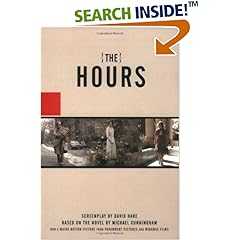
I was supposed to be writing something over the weekend, but couldn't focus, couldn't do anything much. So instead of staring into blank space, picked up my uber-inexpensive copy of David Hare's screenplay of The Hours (Book #5) and started reading that.
I've always been interested in inter-related narratives, multiple stories which crisscross each other through time and space, and this is one of the more interesting ones I've come across recently. I couldn't stand/finish Michael Cunningham's novel, but I've seen the film, and reading the screenplay clarified certain things for me.
Meryl Streep's character is friends with Richard, a poet who's dying of AIDS. Richard was getting this award for his poetry, and Clarissa is throwing a party for him. They have shared this long, arduous friendship, and Richard suspects that he's only staying alive for his friend. Sometime back, Richard had written a novel where there's a character that everyone says is actually Clarissa. Clarissa says it's not her, only that there are too many details which say that it is her. She insists that Richard's work is fiction.
Later, Richard's mother surfaces, when all along I thought she's killed herself--since the mother in the novel killed herself. The mother says that since she abandoned her children, her children probably thought that abandonment was worse than suicide.
All in all, what comes out is that there's this really fine line between fact and fiction, and Clarissa is implicated in Richard's life/work.



